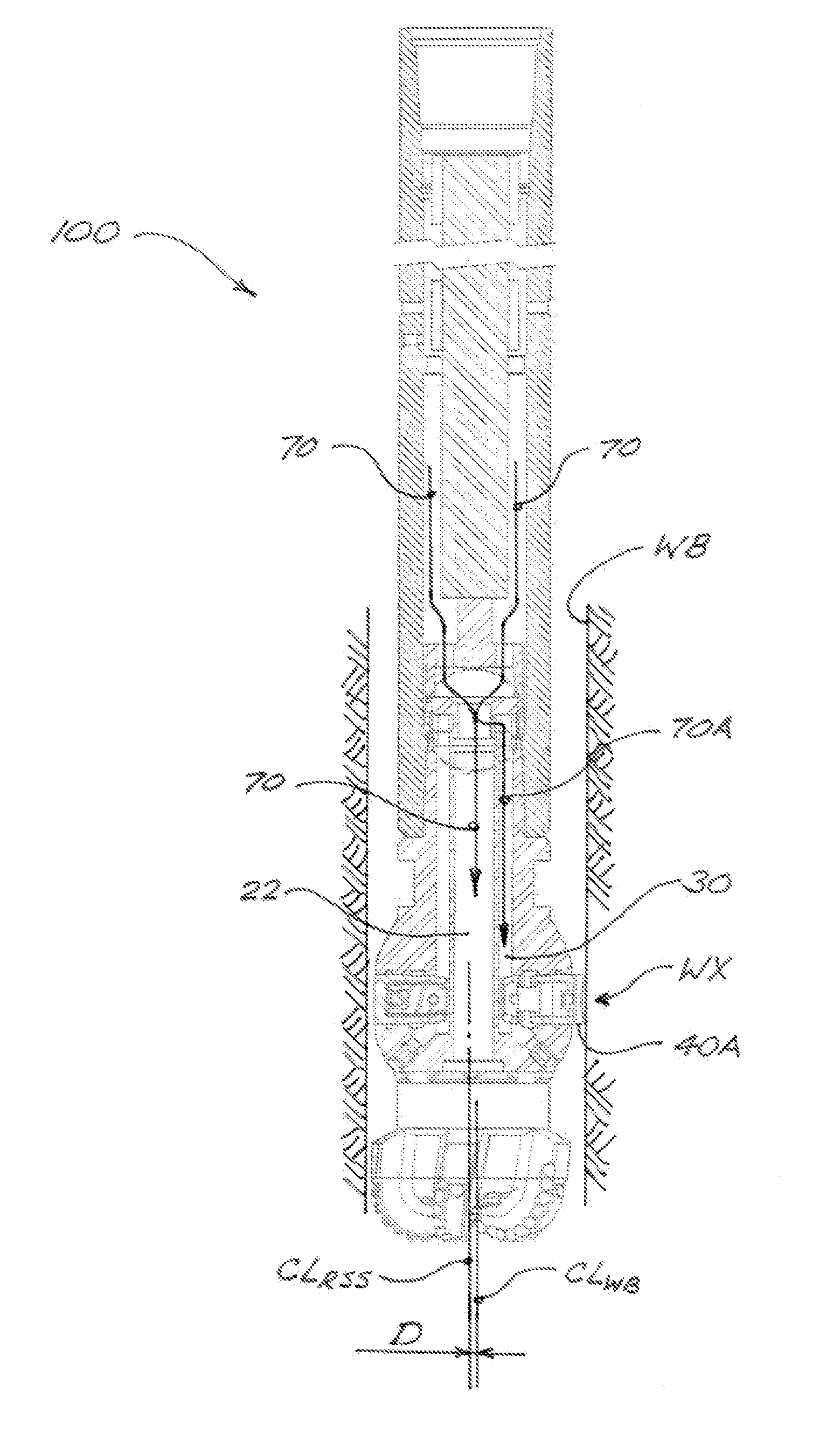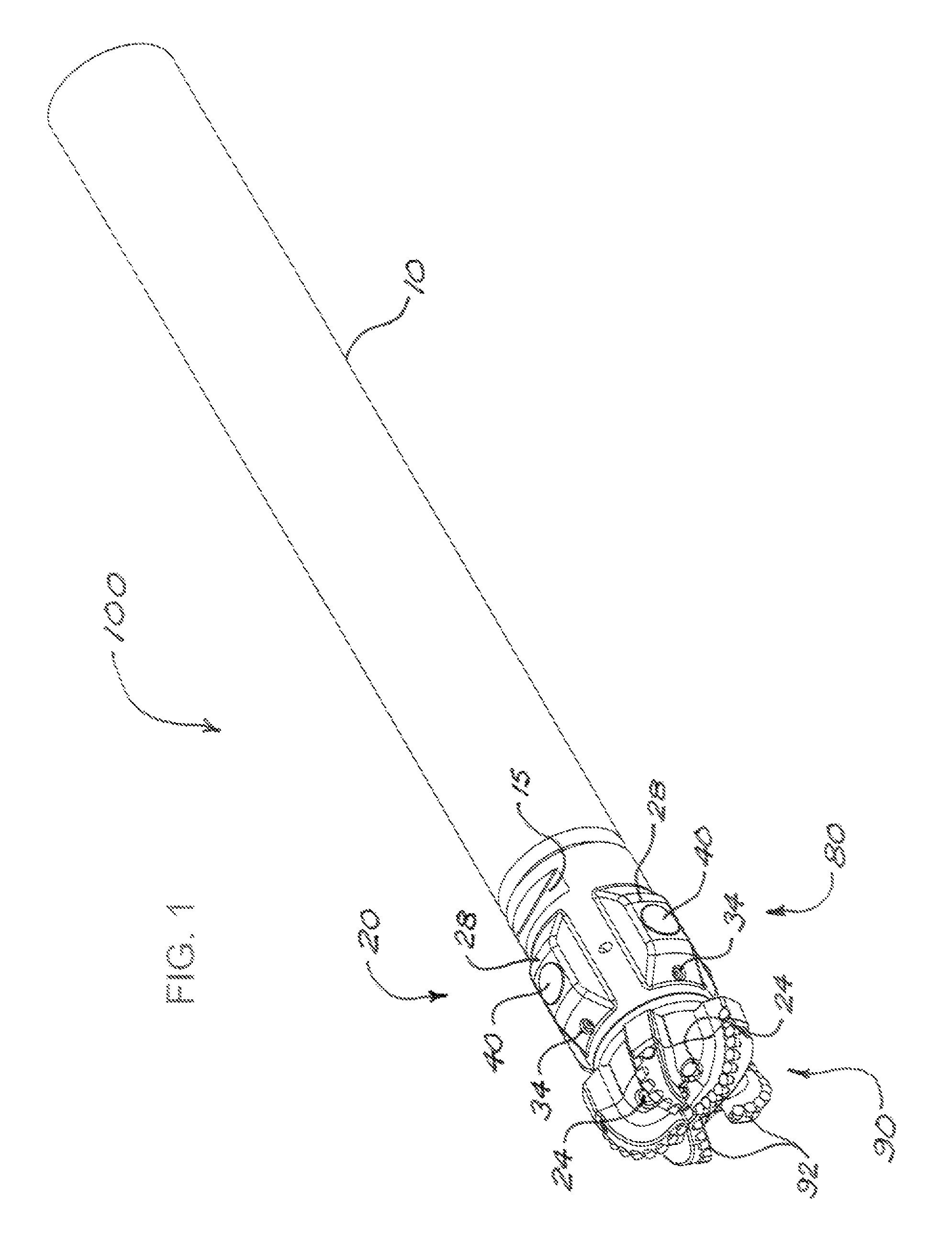Downhole rotary drilling apparatus with formation-interfacing members and control system
a technology of formation interface and control system, which is applied in the direction of drilling pipes, directional drilling, artificial islands, etc., can solve the problems of limited run time, inability to easily separate the interface between the control system and the conventional system, and limited run time, so as to improve the stability, reduce the force needed to push the bit, and enhance the steering ability
- Summary
- Abstract
- Description
- Claims
- Application Information
AI Technical Summary
Benefits of technology
Problems solved by technology
Method used
Image
Examples
Embodiment Construction
[0070]FIGS. 1 and 2 illustrate (in isometric and cross-sectional views, respectively) a rotary steerable drilling apparatus (or “RSS tool”) 100 in accordance with a first embodiment. RSS tool 100 comprises a cylindrical housing 10, which encloses a control assembly 50; and a drill bit 20. An annular space 12 is formed around control assembly 50 within housing 10, such that drilling fluid flowing into housing 10 will flow downward through annular space 12 toward drill bit 20. Drill bit 20 comprises a steering section 80 connected to the lower end of housing 10, and a cutting structure 90 connected to the lower end of steering section 80 so as to be rotatable therewith. Steering section 80 is preferably formed or provided with means for facilitating removal from housing 10, such as bit breaker slots 15. Cutting structure 90 may of any suitable type (for example, a polycrystalline diamond compact bit or a roller-cone-style bit), and cutting structure 90 does not form part of the broade...
PUM
 Login to View More
Login to View More Abstract
Description
Claims
Application Information
 Login to View More
Login to View More - R&D
- Intellectual Property
- Life Sciences
- Materials
- Tech Scout
- Unparalleled Data Quality
- Higher Quality Content
- 60% Fewer Hallucinations
Browse by: Latest US Patents, China's latest patents, Technical Efficacy Thesaurus, Application Domain, Technology Topic, Popular Technical Reports.
© 2025 PatSnap. All rights reserved.Legal|Privacy policy|Modern Slavery Act Transparency Statement|Sitemap|About US| Contact US: help@patsnap.com



